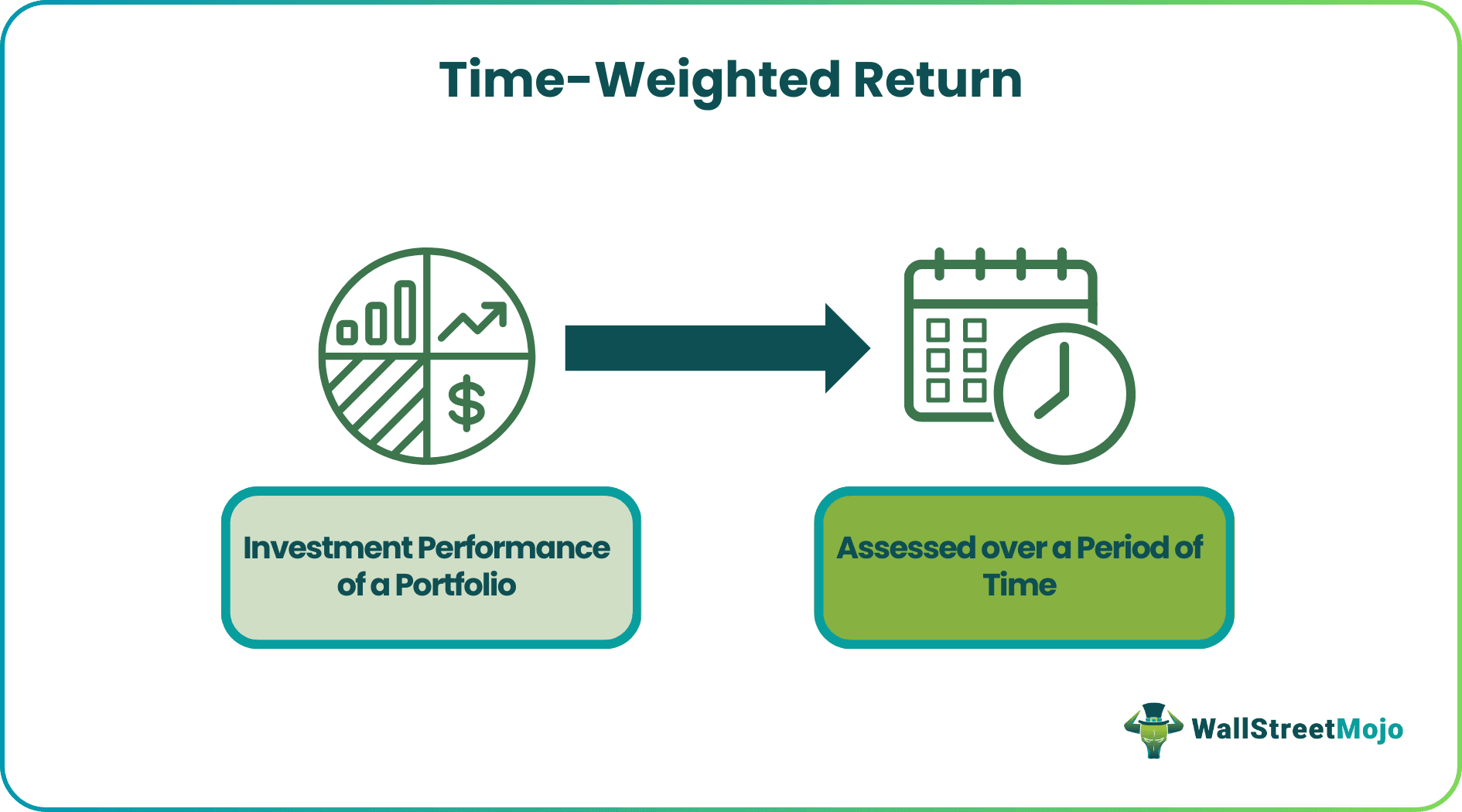Here are the main differences between the two:
Table Of Contents
Time-weighted return (TWR) is a performance statistic that's frequently used to evaluate a portfolio's investment performance over a given time frame. It provides a more accurate indicator of the investment manager's ability to generate returns than other return computations since it does away with the influence of external cash flows.

The main objective of time-weighted returns is to isolate the performance of the investment plan from the effects of external factors, such as deposits and withdrawals. In this approach, the performance of the portfolio over time can be compared, independent of the quantity and timing of cash inflows or withdrawals.
Key Takeaways
The Time-Weighted Return (TWR) is a performance indicator that accounts for the impact of external cash flows when evaluating the compounded rate of return on an investment portfolio. Taking the client deposits and withdrawals out of the calculation provides a more accurate measure of an investment manager's skill. TWR's calculation joins the sub-period returns in order to prevent the timing and size of cash flows from distorting the assessment of overall performance.
TWR is a return metric that came from the portfolio management industry. It came to light because of the shortcomings of existing return metrics, such as the money-weighted return (MWR). Because MWR takes into account the timing and amount of cash flows, it is susceptible to changes in the amount and timing of contributions to and withdrawals from investments. However, TWR was in response to the need for a more objective and comparable metric. TWR's emphasis on eliminating the impact of external cash movements makes it an indispensable tool for accurately evaluating the long-term actual performance of investments.
Here's how TWR's formula works:
Let us understand it better using examples:
Let's consider an imaginary investment scenario to demonstrate the calculation of Time-Weighted Return (TWR) using the given formula:
Segmentation:
Period 1: Investment starts with $10,000.
2: Withdrawal of $2,000, leaving $8,000.
3: Investment gains $1,000, ending with $9,000.
Individual Returns:
Return for period 1: (10,000-10,000-0)/(10,000+0) = 0%
2: (8,000-10,000-(-2000))/(10,000+(-2000)) = -25%
3: (9000-8000-0)/(8000+0) = 12.5%
Geometric Linkage:
Here, the Time-Weighted Return (TWR) is approximately 84.38%. This reflects the compounding effect of time and accurately accounts for the distinct periods of investment activity, providing a more precise measure of performance.
According to a 2023 Morningstar analysis, poor market timing costs investors one-fifth of their fund returns. The research highlights the significance of time in investing decision-making, in addition to fund performance. The 20% average decline in fund returns that investors saw due to poorly timed buys and sells serves as further evidence of the necessity for strategic investment methods. In order to provide an accurate picture of investment performance, time-weighted return (TWR) removes the impact of external cash flows.
TWR is essential because of the following:
Here are the main differences between the two:
| Feature | Time-Weighted Return (TWR) | Money-Weighted Return (MWR) |
|---|---|---|
| 1. Focus | Isolates the impact of market returns on portfolio growth | Measures the investor's overall portfolio performance, including cash flows |
| 2. Cash Flows | Ignored: Neutralizes the effect of deposits, withdrawals, and dividends | Not suitable for Comparing across portfolios with inconsistent cash flows, assessing investor skill |
| 3. Compounding | Accurately reflected: Captures how early gains amplify future returns | Less precise: May understate or overstate compounding depending on cash flow timing |
| 4. Comparisons | Ideal for: Evaluating fund managers, comparing portfolios with different cash flows, and benchmarking | Not suitable for comparing across portfolios with inconsistent cash flows, assessing investor skill |
| 5. Transparency | High: Highlights which investment decisions led to growth | Lower: Can mask the impact of individual decisions due to cash flow distortions |
| 6. Complexity | Moderate: Requires calculating holding period returns for each sub-period | High: Can be challenging to calculate, especially for complex portfolios |
| 7. Risk-Adjustment | Not directly integrated: Requires separate risk measures like Sharpe ratio | Can incorporate risk: Accounts for risk-adjusted return based on cash flow timing |